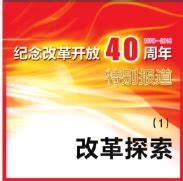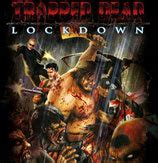expert choice怎么用-expert choice教程
如何使用Expert Choice進行決策分析
在現代商業中,制定正確的決策對于企業的成功至關重要。Expert Choice是一種強大的決策分析工具,可以幫助企業管理者做出明智的決策。本文將介紹如何正確地使用Expert Choice進行決策分析。
1. 確定決策目標
在使用Expert Choice之前,首先需要明確決策的目標。確定決策目標是決策分析的首要步驟,只有清晰地定義了決策目標,才能更好地使用Expert Choice進行分析。
- 確定關鍵業務問題
- 設定明確的目標
- 確定決策的范圍和限制
2. 收集數據和信息
在明確了決策目標之后,接下來需要收集相關的數據和信息。數據和信息是支撐決策的基礎,只有準確和完整的數據,才能夠進行有效的分析。

- 收集內部和外部數據
- 獲取相關專家意見
- 分析市場趨勢和競爭對手信息
3. 構建決策模型
在收集了足夠的數據和信息之后,就可以開始構建決策模型了。決策模型是根據決策目標和收集的數據,建立起來的一種決策分析框架,可以幫助管理者更好地理解問題和做出決策。
- 確定決策因素和權重
- 設定層次結構和標準

- 建立數學模型
4. 進行決策分析
在構建好決策模型之后,就可以使用Expert Choice進行決策分析了。Expert Choice提供了一系列的決策工具和算法,可以幫助管理者進行多因素決策分析,找出最佳的決策方案。
- 輸入數據和權重
- 運行分析工具
- 比較不同的決策方案
5. 做出決策
經過決策分析之后,就可以根據Expert Choice的結果,做出最終的決策了。在做出決策之前,一定要仔細考慮各種因素,確保決策是符合實際情況和最符合決策目標的。
- 綜合分析結果
- 定義決策方案和行動計劃
- 監控和評估決策效果
總結:使用Expert Choice進行決策分析是一種科學和有效的方法,可以幫助管理者更好地做出決策。只要按照正確的步驟和方法進行,就能夠獲得正確和可靠的決策結果。希望本文能夠幫助讀者更好地理解和應用Expert Choice進行決策分析。
Introduction
Welcome to our expert choice tutorial! In this article, we will take you through the ins and outs of expert choice, a powerful decision-making tool that helps individuals and organizations make informed choices based on a variety of criteria.
What is Expert Choice?
Expert choice is a decision-making software that allows users to prioritize and compare alternatives based on their preferences. It uses a process called Analytic Hierarchy Process (AHP) to break down complex decisions into smaller, more manageable components.
- AHP helps users identify the key criteria that they need to consider when making a decision
- Users then compare alternatives based on these criteria to determine the best course of action
How Does Expert Choice Work?
Expert choice works by creating a hierarchical structure of the decision at hand. Users start by defining their overall goal and then breaking it down into smaller objectives and criteria.
- Users then assign weights to each criteria to indicate their importance
- For each alternative, users compare how well they meet each criteria on a scale
- Expert choice then calculates a final score for each alternative based on these comparisons

Benefits of Using Expert Choice
There are several benefits to using expert choice for decision-making:
- It provides a systematic and structured approach to decision-making
- It allows for a more transparent and objective evaluation of alternatives
- It helps users make more informed and data-driven decisions
- It enables users to consider a wide range of criteria and factors in their decision-making process

Who Can Benefit from Using Expert Choice?
Expert choice can be beneficial for a wide range of individuals and organizations:
- Businesses looking to make strategic decisions such as product launches or market expansions
- Government agencies evaluating policy options or resource allocation
- Individuals making personal decisions such as choosing a college or career path
Getting Started with Expert Choice
If you're interested in using expert choice for your decision-making needs, here are some steps to get started:
- Define your decision goal and break it down into smaller objectives and criteria
- Assign weights to each criteria to indicate their importance
- Compare alternatives based on how well they meet each criteria
- Review the final scores for each alternative and make your decision
Conclusion
Expert choice is a powerful decision-making tool that can help individuals and organizations make informed choices based on a variety of criteria. By following a structured approach and using the Analytic Hierarchy Process, users can evaluate alternatives more objectively and make better decisions. Consider incorporating expert choice into your decision-making process for more effective and efficient outcomes.



















